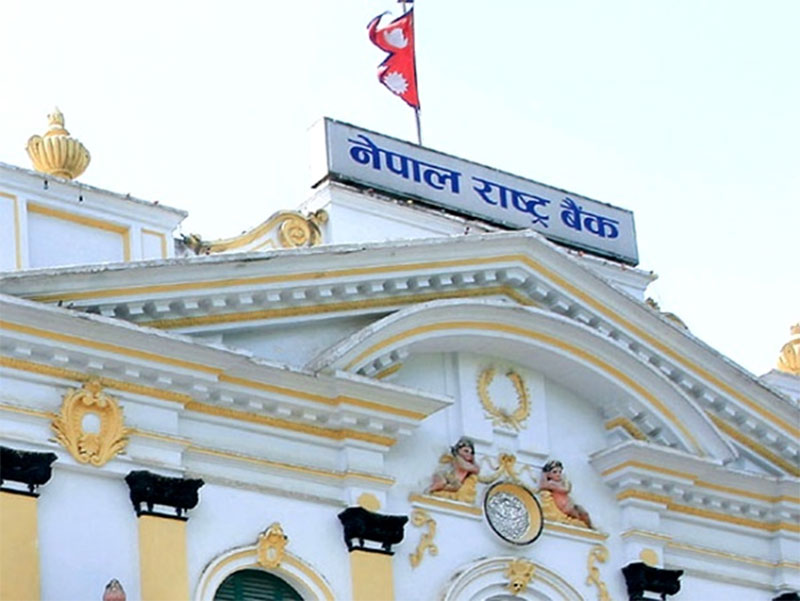
OR
Opinion
Is NRB Directive on Working Capital Loan Private Sector-friendly?
Published On: January 9, 2023 10:45 AM NPT By: Shanker Man Singh


Shanker Man Singh
(The author is a former head of Nepse and SEZ and is currently affiliated with the private sector.)news@myrepublica.com
The NRB has given two and a half years time to the borrowers who are using more than the limit set by the working capital loan guidelines 2079BS to bring them within the limit.
After months of wrangling, Nepal Rastra Bank (NRB) and the private sector have agreed to resolve the working capital loan problem. In the recent past, the meeting between the top officials of NRB and the top leadership of the private sector indicated that they are working to find a way between the two parties to solve the problem of businessmen taking to the streets. In view of the implementation status of the monetary policy and measures taken recently and the existing national and international economic situations, the course of action taken in the annual monetary policy was continued and some modifications were given in the previous review.
Based on the improvement in inflation and foreign exchange reserves, during the half-yearly review of the monetary policy, it has been agreed that the monetary measures will be changed as needed. The NRB and representatives of the private sector reached an agreement on the rescheduling of the implementation of current capital guidelines, which led to strong reactions from the business community. The NRB implemented the guidelines on October 18, 2022, arguing that it would prevent the misuse of loan funds to business firms. However, the guidelines could not survive even three months. There has been no significant change in the country's economic fundamentals; only the finance minister belongs to the UML. However, how can we look at the dramatic U-turn in monetary policy after the change in government?
It is to be remembered that after the formation of the new coalition government under the leadership of CPN (Maoist Center) Chairman Pushpa Kamal Dahal and the new finance minister taking charge, the NRB governor started consultations with the umbrella organizations of the private sector. The NRB was of the view that the main purpose of implementing the working capital guidelines is to prevent firms from diverting loans for other purposes. Officials of the central bank were of the opinion that the bank and financial institution loans have contributed to ballooning imports in the past due to the diversion of working capital loans for other purposes such as imports, investment in real estate and stock market. Many businessmen invested the money borrowed in the form of short-term working capital loans in long-term investments like real estate and now they are struggling to cash those assets to bring their debt exposure within the prescribed limits.
The NRB has given two and a half years time to the borrowers who are using more than the limit set by the working capital loan guidelines 2079BS to bring them within the limit. Recently, by revising the working capital loan guideline 2079BS, it seems that the loan exceeding the limit can be converted into a periodic loan and paid in five installments by 2082 BS. What will be the effect on the bank's NPA if the loan adjusted in this way is not restructured and made as a periodic loan and no provision for any type of loss is made?
There is also a provision that if a borrower adjusts the working capital loan before two and a half years, there will be no prepayment charge. Similarly, banks also have to report to the NRB on a monthly basis how much the portfolio has been adjusted according to the provision. Similarly, the NRB has arranged that the limit set by "Guidelines for Working Capital Loans 2079" will not be implemented for working capital loans up to Rs 10 million. According to the guidelines, the limit has been increased to Rs 10 million by revising the provision that the limit does not apply to loans up to Rs 5 million.
In the case of borrowers who use a total of 10 million rupees or less current capital loans from the entire banking system, banks and financial institutions can determine the limit of current capital loans under the rule of their current capital loan policies. However, the type of loans provided for working capital purposes should be in accordance with this guidance, according to the revised regulations of the NRB. Similarly, banks and financial institutions have amended the provision of periodic loans of more than five years for permanent working capital loans, and have provided periodic loans of 3 to 10 years.
Similarly, for fixed working capital loans, the provision of five years of estimated financial statements has been amended to three years. Similarly, it has been arranged that the audited financial statements of three years should be required. According to the guidelines on working capital loans for the first time in the course of review or renewal of working capital loans issued before the stipulated date when the loan limits are matched under the headings of stable working capital loans and decreasing, the NRB has stated that it will not be considered as rescheduling or restructuring for the purpose of loan classification and loan loss arrangement. Working capital loan guidelines 2079 have been amended so that banks and financial institutions determine the limit according to their current working capital loan policy based on estimated operating expenses, and estimated cash and fund flow for new firms/organizations/companies with a period of less than three years since the start of business transactions. According to the NRB, the details of current assets and current liabilities of the debtor must be updated in the loan file every month for loans up to Rs 50 million.
According to the NRB, it has been extended to 6 months by revising the provision requiring quarterly updates by the internal auditor for loans above Rs 50 million. In case of need for working capital loans of an emergency nature, the board of directors of banks and financial institutions can only grant them by making a decision. The NRB recently amended the working capital loan guidance 2079 and made such a provision. "If a borrower needs a loan of an emergency nature more than once in a year, the board of directors of the relevant bank and financial institution can decide and provide such a loan," it is stated in the working capital loan guidance 2079. It is clear that the NRB has withdrawn from current capital loan guidance 2079 after all-round opposition and pressure.
Industrialists/businessmen had been lobbying for the postponement of at least two years against the provision of only 25 percent of the annual turnover by setting a limit to the businessmen who are getting loans openly. According to the NRB, the liquidity in the market and the external sector are becoming easier and there has been improvement in the remittance and tourist sectors. There are also those who hold the opinion that it is not yet clear because the revised system puts all the businessmen in the same basket. Industry sector and business sector have a cash cycle. Some industries have to bring raw materials from abroad for production. For this, it may take 5-6 months from the opening of LC to the delivery of goods to Kathmandu. Because of that, the turnover can happen only twice a year.
All businesses are viewed in the same light. Is the demand that this loan limit should be arranged by looking at the business not fulfilled? On the other hand, businessmen used to take current capital loans and pay the loan principal and interest.But now the guidance prohibits doing so. “The current capital loan account cannot be recovered by spending the principal/interest of the loan. In the last month of every quarter, it is not allowed to increase the current capital limit and approve loans to old borrowers," the guidelines state. In the last month of every quarter i.e. October, March, and June, it has been arranged that the current capital limit cannot be increased and new current capital loans cannot be approved under any title to the old borrowers.
The NRB finally revised the guidelines but did not suspend them. Despite the strong pressure for postponement, it is seen that the NRB has remained adamant. The NRB has implemented the current capital loan guidance after six months. Some industrialists have responded that the NRB has only given a lollipop of amendment and more stringent provisions have been put in the amendment.
The monetary policy and the current controversy clearly show the lack of economic management and policy analysis capacity in the Prime Minister's Office. All over India, including within the Prime Minister's Office, there is a Council of Economic Advisers headed by the Chief Economic Adviser who closely monitors the country's economic management and performance and provides policy feedback to the Prime Minister and the Cabinet for necessary action. It is strongly recommended that the new Prime Minister should create such a Council of Economic Advisers in the Prime Minister's Office. Secondly, considering the growing importance of monetary policy in economic management, a 5-7 member Monetary Policy Committee should be formed under the chairmanship of the NRB governor to formulate and evaluate the monetary policy. This will help make the policy less controversial.
You May Like This

NRB’s target to expand private sector lending of 11.5 percent this year likely to fall short
KATHMANDU, Feb 6: Nepal Rastra Bank (NRB) seems to have fallen behind in meeting its target of the banks’ lending... Read More...

Private sector hails revised monetary policy for FY 2023/24, express doubt over proper implementation
KATHMANDU, Dec 9: The private sector welcomed the first quarterly review of the monetary policy for the current fiscal year... Read More...

NRB takes ‘cautious’ approach to fulfill demands of private sector
KATHMANDU, July 24: Nepal Rastra Bank (NRB) has been cautiously flexible towards the private sector through the monetary policy for... Read More...










Just In
- NRB introduces cautiously flexible measures to address ongoing slowdown in various economic sectors
- Forced Covid-19 cremations: is it too late for redemption?
- NRB to provide collateral-free loans to foreign employment seekers
- NEB to publish Grade 12 results next week
- Body handover begins; Relatives remain dissatisfied with insurance, compensation amount
- NC defers its plan to join Koshi govt
- NRB to review microfinance loan interest rate
- 134 dead in floods and landslides since onset of monsoon this year








Leave A Comment